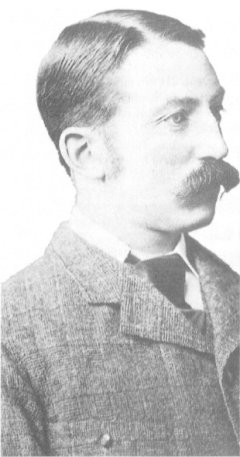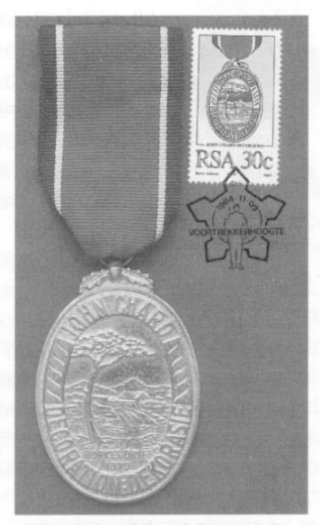

 The South African
The South African
The author retired in 2006 after 37 years of service as a physicist at Sasol. He was the last officer commanding Sasolburg Commando, as well as the first officer commanding Regiment Sasolburg, following the conversion of the former into a COIN (counter-insurgency) regiment. His interests include military history (general), the Anglo-Boer War, aviation history and military heraldry. He is a collector of South African military badges.
Part-time military service
Military service on a part-time basis is as old as mankind itself. It is first mentioned in the Bible, when, in circa 2000BC, the patriarch Abraham led 318 trained men from his clan to rescue his nephew Lot from the hands of King Chedorlaomer (Moses, Genesis 14: 14, c1500BC). The practice has continued ever since. The cost of maintaining armed forces is exorbitant. Therefore, most governments rely on a small full-time force, augmented by part-time reserve forces.
Reserve forces are frequently composed of both volunteers and conscripts. Under operational conditions, most servicemen are paid only a small sum for subsistence. In the modern period, however, governments have found that military honours, while relatively inexpensive to produce, are a useful means of improving the morale of both full and part-time forces.
Part-time military service was introduced to South Africa in 1659, during Jan van Riebeeck's time as commander at the Cape (Bosman and Thom, 1957, p34). This was done to strengthen the small permanent garrison at the Cape. The concept of the citizen-soldier was well known in Europe at the time. At first, burghers were called up for service against the Khoisan under the command of officers of the Vereenighde Oostindische Compagnie (VOC). By 1676, these armed and mounted patrols were referred to as 'commandos' and, from 1715, they were led by their own officers (Roux, 1925, p147).
The Commando system served the trekboer, or migrant farmer, well during the eighteenth and early nineteenth centuries (Roux, 1946). It later formed the backbone of the defence system of the Voortrekkers (Preller, 1937), as well as of both Boer Republics (Coetzee, 1940; Vorster, 1939). During the twentieth century, the Commando system was restored as an area protection force (Retief, 1997, pp231-3). Some military awards for recognising long and efficient part-time service in the modern Commandos are described elsewhere (Retief, 2007).
Part-time soldiering in South Africa entered a new phase in 1855, when the British system of volunteer regiments was introduced in the Cape Colony and Natal. The regiments of the British Regular Army, doing garrison duty in South Africa, had to be withdrawn for participation in the Crimean War (1854- 6), as well as for the suppression of the Indian Mutiny (1857-8). However, these objectives could be accomplished only if reserve forces were available to meet the threats on the Eastern Frontier of the Cape Colony, as well as in Zululand. Part-time military units were thus founded in almost every town and village of the Cape and Natal colonies (Tylden, 1954; Hulme, 1969, pp30-7). This patriotic volunteer movement received the enthusiastic support of Sir George Grey, the Governor at the Cape.
Some of the colonial volunteer regiments, such as the Cape Field Artillery (Orpen, 1965), Prince Alfred's Guard (Orpen, 1967) and the Natal Carbineers (Tylden, 1954, p153), have served South Africa well for 150 years. Given the turbulent history of this country, every new generation has had ample opportunity for active military service. These services were rewarded by the relevant authorities with appropriate military honours.

Colonel J R M Chard, VC
(Photo: Bancroft, 1991, p 136).
Colonel John Chard, VC
Colonel Chard is buried in the churchyard of the Church of St John the Baptist, in the town of Hatch Beauchamps near Taunton, in the county of Somerset, England (Bancroft, 1991, p136). In the church is a stained glass window in his honour, as well as a small museum. The latter houses, amongst other items, a John Chard Decoration and Medal, as well as a 1984 South African 30-cent postage stamp illustrating the decoration. These acquisitions were made possible by Miss Joan Abrahams, JCD, who was affectionately known by thousands of South African servicemen as 'Tannie Mossie', during the Border War (1966-89). John Chard is fondly remembered in England. In South Africa, he is proudly remembered by the few thousand recipients of the decoration and medal that bear his name, and their descendants.
The John Chard Awards
The British Government instituted the tradition of awarding campaign medals, as well as medals for long and efficient service, in the aftermath of the Napoleonic Wars, 1799-1815 (Gordon, 1971; Dorling, 1963). These honours were granted to officers and men of both volunteer and regular armed services. During the long reign of Queen Victoria (1837-1901), when numerous wars were being fought all over the British Empire, this tradition became firmly established in Britain itself as well as in its colonies. In addition to awards for bravery, merit and active service, British honours were also granted to officers and men who had performed long and efficient service in the part-time forces of the Cape Colony and Natal and, later, the Union of South Africa.
For the army, these awards included the Volunteer Officers' Decoration (Colonial) (1894), the Volunteer Long Service Medal (1896), the Colonial Officers' Auxiliary Forces' Decoration (1899), the Colonial Auxiliary Forces' Long Service Medal (1908), as well as the Efficiency Decoration and Medal (1940). Part-time naval personnel could be awarded the Royal Naval Volunteer Reserve Decoration (1908), as well as the Royal Naval Volunteer Reserve Long Service and Good Conduct Medal (1908). A common characteristic of all these decorations, as well as the Efficiency Medal, is that they were oval in shape. This made them unusual (Dorling, 1963, pp120-5; Kennedy, 1957, pp164-71).
Following the formation of the Union of South Africa, various British awards were adopted for use by the Union Defence Forces (UDF), established in 1912. In 1952, however, the National Party Government announced a new set of military honours. The new decorations and medals were part of a greater initiative to develop a uniquely South African character for the UDF (Jooste, 1995, pp28, 41).
Amongst the new awards were a decoration and a medal named in honour of Lieutenant John Rouse Merriott Chard, Royal Engineers, who had commanded the defence of Rorke's Drift during the Zulu War of 1879 (Government Gazette, 1954). On the afternoon and night of 22/23 January 1879, Chard and his mixed force of 138 men repelled sustained attacks by the Zulu impis (Bancroft, 1991). For this epic defence, Lt Chard and ten others were awarded the Victoria Cross, for 'some signal act of valour or devotion to their country in the presence of the enemy' (Dorling, 1963, p20).
The actions of Lt (later Col) J R M Chard, VC, demonstrated the value of preparedness and revealed his outstanding leadership qualities and perseverance in the face of overwhelming odds. For these traits, he was chosen to be a role model for the twentieth century soldiers, sailors and airmen of the Active Citizen Force, known today as the Reserve Force. The awards were intended for recognition of long and efficient part-time service (Alexander et al, 1986, p48).
The John Chard Decoration and Medal replaced the Efficiency Decoration and Medal, which had been in use since 1940. In keeping with tradition, the oval shape was retained.

The John Chard Decoration, with a 1984 South African 30-cent postage stamp.
(Photo: SA Department of Post and Telegraphs).
Description and Regulations
The John Chard Medal is made of bronze and is 50,8mm in length and 38,1 mm in width, a ratio of 4:3. On the obverse is a scene, in relief, representing the missionary hospital and commissariat store at Rorke's Drift. In the foreground is a prominent tree and a drift, with the words 'Rorke's Drift 1879' inscribed beneath. At the top edge ofthe medal are the words 'John Chard' and, at the bottom, 'Medalje' and 'Medal'.
In 1952, a St Edward's Crown, the Royal Cipher of Queen Elizabeth II, as well as the embellished 1932 version of the Coat-of-Arms of the Union of South Africa (Pama, 1965, pp 84-6), appeared in relief on the reverse of the medal (Numismatikus, 1967). After South Africa became a republic in 1961, a new die was introduced for the reverse. The Royal Cipher and Crown were absent from the new design.
The design of the John Chard Decoration is similar to that of the medal, except that it is made of silver and the words 'Decoration' and 'Dekorasie' appear at the bottom edge. Recipients are authorised to use the post-nominal title 'JCD'. From 1977 to 1986, however, this post-nominal title could not be used unless the award. had been made before 1977 (Government Gazette, 1977; 1986).
Both John Chard honours are suspended by means of rings from identical ribbons. The ribbon is dark red with narrow dark blue stripes forming the edges. The red and blue stripes are separated by two thin white stripes. For both awards, the service arm of the recipient, at the time of granting, is indicated by a miniature silver emblem worn on the ribbon of the award as follows: For the South African Army, crossed swords; for the South African Air Force, an eagle; and for the South African Navy, a fouled anchor. On service and undress uniforms, when medal ribbons only are worn, the award of the John Chard Decoration is indicated by a silver button bearing the letters 'JCD', which is fixed to the ribbon.
According to the original regulations, the John Chard Medal could be awarded to a member of the part-time Active Citizen Force, irrespective of rank, who had completed twelve years of efficient service, which need not have been continuous (Government Gazette, 1954). In 1986, this requirement was changed to ten years to bring it in line with the requirements for the medals for long and efficient service in the full-time Permanent Force (Government Gazette, 1986). The John Chard Decoration could be awarded to officers, warrant officers, noncommissioned officers and men of the Citizen Force who had completed 20 years of efficient service, which also need not have been continuous.
After 30 years of efficient service, a silver clasp, 31,8mm by 6,4mm, with the letters 'JCD' in the centre, could be awarded. It is worn on the ribbon of the John Chard Decoration. On service and undress uniforms, the award of a clasp is indicated by a second silver button bearing the letters 'JCD', fixed to the ribbon. A peculiar stipulation of the 1954 regulations was that the John Chard Decoration and Medal could not be worn simultaneously. This restriction was a carry-over from the regulations for the Efficiency Decoration and Medal (Dorling, 1963, p123). It frustrated members of the Citizen Force, especially when, after 1975, members of the Permanent Force were allowed to wear all their medals for long and efficient service. These included gold, silver and bronze medals for 30, 20 and 10 years of efficient military service respectively (Government Gazette, 1975).
In 1986, permission was granted to Citizen Force members, who were holders of both the John Chard Decoration and Medal, to wear both simultaneously. This concession was extended to include holders of both the John Chard Decoration and the Efficiency Medal (Government Gazette, 1986). To this day, these honours for voluntary service are highly appreciated by members of the part-time forces (Alexander et al., 1986, p48), as has been the case for the past century.
In 2003, the African National Congress-led Government of South Africa introduced a new set of military decorations and medals. The John Chard Decoration and Medal are among the awards that were abolished for political reasons.
Bibliography
Return to Journal Index OR Society's Home page
South African Military History Society / scribe@samilitaryhistory.org